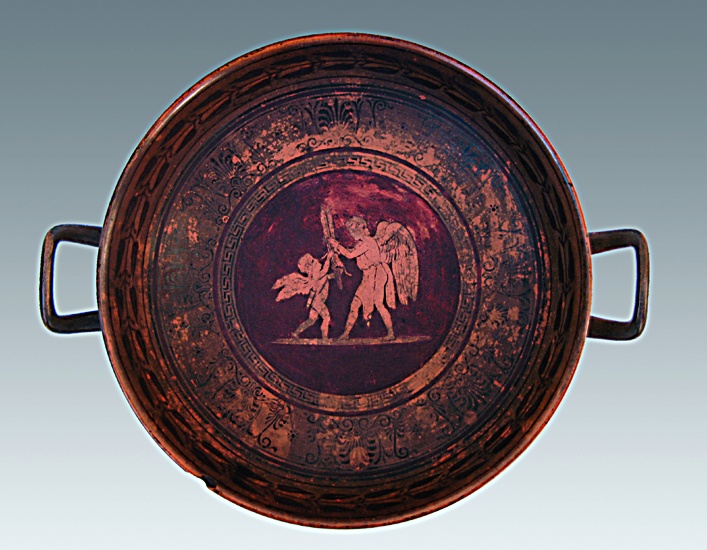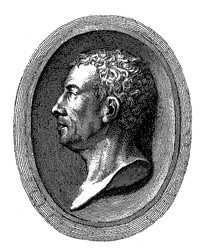Die nach griechischen Vorbildern gestaltete Schale stammt aus der 1843 gegründeten königlichen Hof-Terrakottafabrik des Peter Ipsen in Kopenhagen. Die Außenseite ist mit einem Strahlenkranz im Wechsel rot-schwarz bemalt, darüber läuft ein breites, ebenfalls in rot und schwarz gemaltes Ornamentband mit runden Kettengliedern und Palmetten in den Zwickeln, das entfern an ein antikes Lotus-Palmettenband erinnert. Auf der Innenseite der Schale befindet sich im Zentrum eine figürliche Szene auf rotem Grund, darum ein schmales Mäanderband und ein Palmetenband auf schwarzem Grund. Das Bild zeigt einen jugendlichen, leicht bekleideten Amor, der einem kindlichen nackten Amor zwei Fackeln reicht.
Pressmarke: P. Ipsen
en

